You are viewing ARCHIVED content published online before January 20, 2025. Please note that this content is NOT UPDATED, and links may not work. Additionally, any previously issued diversity, equity, inclusion or gender-related guidance on this webpage should be considered rescinded. For current information, visit https://www.blm.gov/blog.
BLM Idaho’s fence repairs at Clover Creek manage grazing to protect stream health
Story by Angie Tom, Public Affairs Specialist (Acting), Twin Falls District. Photos by Scott Maclean, Fisheries Biologist, Jarbidge Field Office; and Marshall Platt, BLM Senior Firefighter.
In fall 2021, a little hiking and a lot of hauling went a long way towards improving stream health, water quality, and fish and wildlife habitat at Clover Creek, a major tributary to the Bruneau River in southwest Idaho. The BLM Idaho project to repair exclosure fences along the stream will help to manage livestock grazing in order to protect the riparian areas.
An exclosure fence excludes animals (in this case, cattle) from a particular area. Cattle damage the riparian area by eating the plants. Keeping them out also allows the desirable riparian vegetation to establish itself without being trampled. Cattle can also cause excessive erosion by reducing streambank stability from hoof shearing of banks. They can impair water quality from increased sedimentation, widening channels, and loss of vegetation.
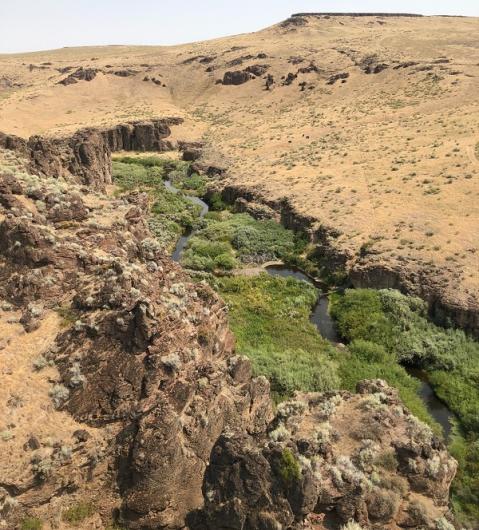
The exclosure fences were originally installed at Clover Creek from 1987 to 1992. When they were new, heavy wooden swing panels strung across the creek on steel cables kept cattle out during hot summers and averted the difficult task of herding them out of these canyon areas when it was time to move them to another pasture. Grazing is rotated among pastures in allotments to prevent overgrazing and optimize nutrition for cattle. As a result of the fences, riparian vegetation like willows, rushes, and sedges stabilized previously flood-scoured streambanks, where this type of vegetation used to be largely absent.
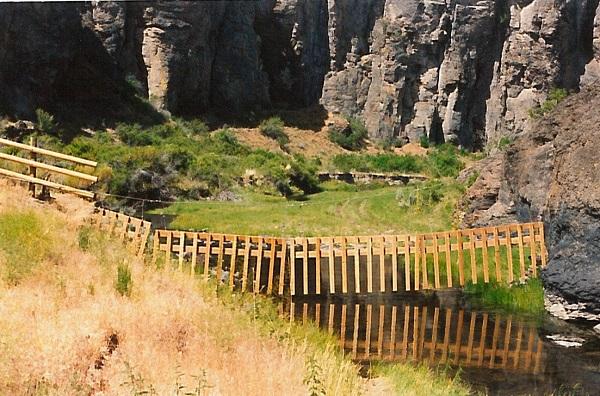
But in 2014, inspections of exclosure fences along Clover Creek indicated that the fences needed repairs. Some of the fence panels lay in the stream beds with cables sagging or sections missing, and a few of the panels were washed downstream.
In 2018, Fisheries Biologist Scott Maclean and volunteers Rich Bupp and Daina Jackson documented how levels of E. coli bacteria downstream of areas protected by exclosures remained within water quality standards, while levels downstream of mixed land ownership largely accessible to cattle did not. However, some of the fences were no longer serving their purpose, so Maclean applied for repair funding.
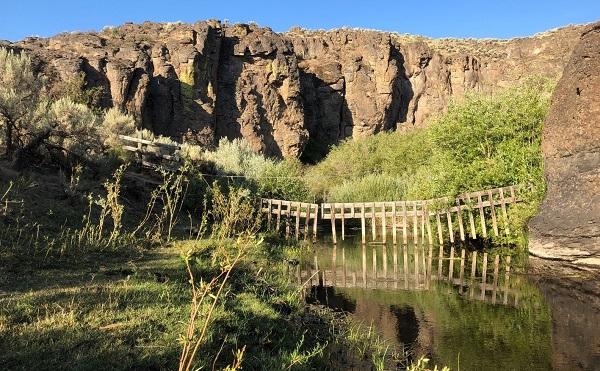
In 2020, seasonal James Taylor replaced a few of the broken wooden swing panels with heavy-gauge, welded wire “hog panels” that were cheaper and easier to carry into the job sites. However, the original design soon proved its worth.
“The cattle just pushed through the hog panels,” said Maclean, after inspecting the exclosures in fall 2021. “They didn’t seem to mind the wire panels going over their backs, and there was enough damage that we needed to go back to the wood panel design.”
To assist with installing the new panels, Maclean looked to Marshall Platt, Sydney Schvanevelt, Chuck Martellaro, Brandon Leal, and Radisa Kulasevic, BLM fire employees from the Twin Falls engine yard who were looking for opportunities to extend their season. Each day the fickle South Idaho autumn weather allowed, they made the two to three-hour drive to Clover Creek and packed in their tools and building materials, sometimes up to a mile.
“We packed in the wood, a come-along, a fence stretcher, fencing wire, hand tools, waders, our lunches, and water,” said Platt.
Leal spent all of one day just delivering 100-pound pre-built panels, one at a time, strapped to a frame pack, while his crewmates assembled the exclosure. He did the two-mile loop from truck to creek and back six times.
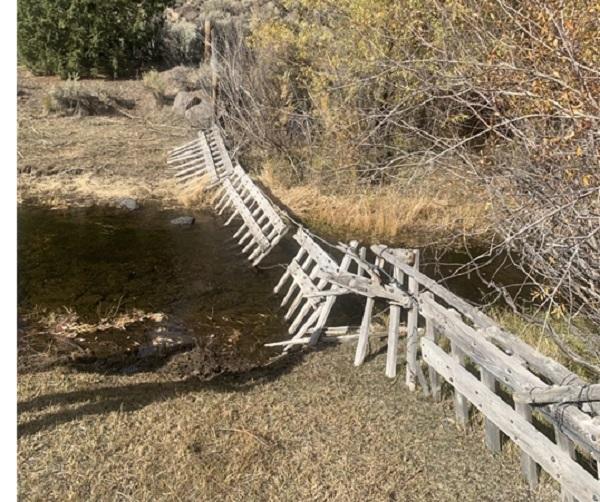
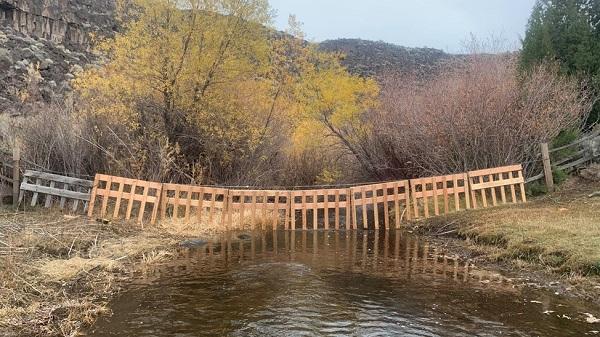
Eight weeks and 3,000 pounds of lumber later, Clover Creek had 10 freshly repaired exclosures. As a result of this project, the Jarbidge Field Office regained the ability to manage these areas to meet objectives and the Idaho Standards for Rangeland Health. In the bigger picture, Clover Creek’s hard-won improvements in habitat, biodiversity, and water quality are secure for years to come.
Related Stories
- Nine years of partnership pays off: Fitzhugh Creek Meadow restoration achieves dramatic results
- Using science to uncover mysteries of the Mesa archaeological site in Alaska
- Lake Havasu Fisheries Improvement Program is the gift that keeps giving
- BLM is thankful for public lands volunteers
- BLM delivers on administration priorities
